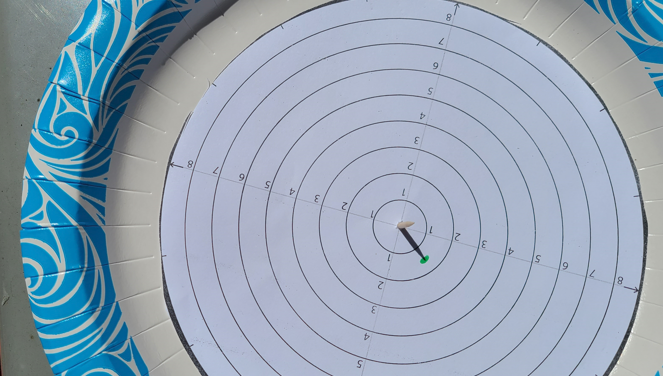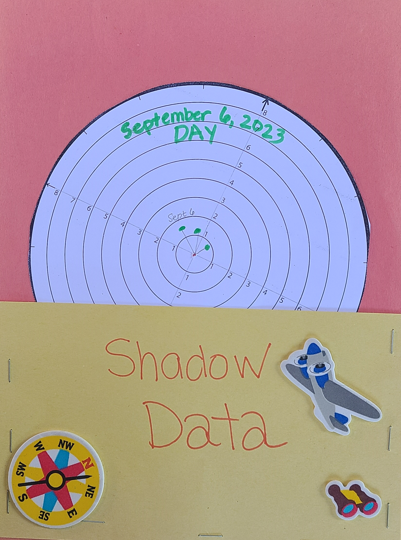|
OBJECTIVES:
1.Learn how to identify
where the Sun rises in Fremont.
2.Learn how to record and collect
shadow data.
3.Students act as scientists by measuring shadows,
recording the data, plotting the data and then interpreting why the
shadows change its length.
VOCABULARY:
north, south, east,
west
seasons
(summer, fall/autumn, winter, spring)
horizon
shadow
MATERIALS:
Shadow grid to
collect data
Shadow line graph blanks and example
paperplate (9 inches)
Shadow stick (playdough and toothpick) to produce the shadow to measure
Data Sheet Summary
BACKGROUND:
This long-term project
helps students understand about the properties of light and what causes
shadows. In their larger study of light, they will learn what causes day
and night as well as what causes the seasons—why days get longer and
shorter.
A shadow is an area where light from a light
source is obstructed by an object. The shadow occupies all of the space
behind an opaque object with light in front of it.
A year is the time it takes for the Earth to
orbit the Sun once. As it orbits, the Earth has a tilt on its axis
relative to the Sun, causing different seasons. Also, the tilt of the
Earth's axis causes the angle of the sun (its apparent height in the sky)
to differ during the year. This angle difference causes a change in the
length of shadows. Low angles create longer shadows and high angles
produce shorter shadows.
For the northern hemisphere, summer is when the
northern hemisphere is tilted toward the Sun and winter is when it is
tilted away from the sun. The days are longer and the shadows are
shorter in summer. Conversely, the days are shorter and the shadows are
longer in winter.
PROCEDURES:
1 . The teacher needs to find a place on the
playground that can be sunny at the time the class will take the reading.
(Note: Due to shadows from trees and buildings, an ideal place at 10am may
not be an ideal place at 1pm. Be sure to check the shadows at the time
students will be taking measurements. Remember to adjust for Daylight
Savings time in November and March). Children should be facing East
(Mission Peak at Mattos) . The teacher needs to find a place on the
playground that can be sunny at the time the class will take the reading.
(Note: Due to shadows from trees and buildings, an ideal place at 10am may
not be an ideal place at 1pm. Be sure to check the shadows at the time
students will be taking measurements. Remember to adjust for Daylight
Savings time in November and March). Children should be facing East
(Mission Peak at Mattos)
2. Each student will measure shadows and record
shadow length on a shadow grid. If it is rainy or overcast, delay the reading
until the next sunny day that works.
It is important that the cards are aligned
similarly for each reading toward east. Students should be
facing where Sun is rising, so they do not get in way of the shadow.
They will write the
date next to the mark.
3. The Shadow Grid already has concentric
lines that are 1 cm apart and will make it easy for students to measure.
4. Measurements should be taken bimonthly where
possible. Teachers will decide whether measurements will be taken in
centimeters or inches (we recommend centimeters). You can collect
data, put it in students folder and you may want to collect data on graph
periodically.
5. At the end of the
project, information from the Data Sheet Summaries will be used to make a
line or bar graph for the year showing the changes in shadow length from
month to month.
6. Ask students what patterns they see in the
graph. Which months had longer shadows? Which months had shorter ones?
Review why shadow length changes throughout the year in terms of the
earth’s tilt relative to the Sun.
|